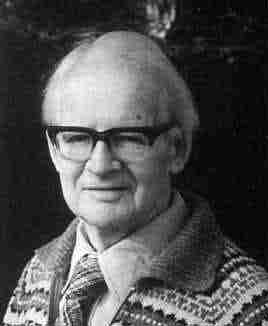


 تاريخ الرياضيات
تاريخ الرياضيات
 الرياضيات في الحضارات المختلفة
الرياضيات في الحضارات المختلفة 
 الرياضيات المتقطعة
الرياضيات المتقطعة
 الجبر
الجبر
 الهندسة
الهندسة 
 المعادلات التفاضلية و التكاملية
المعادلات التفاضلية و التكاملية 
 التحليل
التحليل
 علماء الرياضيات
علماء الرياضيات |
Read More
Date: 21-9-2017
Date: 18-9-2017
Date: 21-9-2017
|
Died: 10 January 1984 in Cambridge, Cambridgeshire, England

Stephen Bosanquet's father was Claude Charles Courthope Bosanquet (born in St Osyth, Essex about 1863) a clergyman living at the Vicarage, Linkinhorne, Callington, Cornwall in 1911, and his mother was Millicent Percy Bosanquet (born in Weymouth, Dorset about 1869). The parents were married in 1892.
Bosanquet was educated at Balliol College, Oxford, and his doctorate, which was supervised by Hardy, was awarded in 1929. As well as his D.Phil. from Oxford, he was awarded a D.Sc. in 1935. Bosanquet's early 1930s papers were on series and integration, a 1930 paper being on fractional integration, a topic he would return to many times.
Bosanquet married Isabel Mary Linfoot (born in Sheffield 25 September 1906) in 1936. Isabel was the daughter of George Edward Linfoot, a mathematics and music master in a secondary school, and Laura Edith Linfoot. Isabel died in Cambridge in November 1992.
Bosanquet's first and only appointment was to University College, London. He was appointed in 1929 as a Lecturer, becoming a Reader in 1936, and finally a Professor in 1966. He retired in 1971 and some time later moved from London to Cambridge. He spent a few periods away from London, however, during his career. For example he was a visiting professor at the University of Utah during 1964-65 where he gave a major lecture series on The history and development of the theory of divergent series and integrals. During 1969-70 he visited the University of Western Ontario and gave another major lecture series, this time on Matrix transformations and sequence spaces with applications to summability.
A strong supporter of the London Mathematical Society, Bosanquet was secretary to the Society from 1947 to 1951. He was Vice-President from 1950 to 1954 and, over the similar period 1951-55, he was editor of the Journal of the London Mathematical Society.
Bosanquet wrote many papers on the convergence and summability of Fourier series. He also wrote on the convergence and summability of Dirichlet series and studied specific kinds of summability such as summability factors for Cesàro means. His later work on integrals include two major papers on the Laplace-Stieltjes integral published in 1953 and 1961. Other topics he studied included inequalities, mean-value theorems, Tauberian theorems, and convexity theorems. He repaid Hardy for starting him out on his mathematical career [1]:-
He saw Hardy's great book 'Divergent Series' through the press during Hardy's last illness and he later edited the volume on 'Series' in Hardy's Collected Works; he was chief editor for the last two of the seven volumes.
Over a period of 30 years, Bosanquet supervised 19 students for their doctorate. He had a reputation for being a excellent supervisor who was always ready to offer help and advice to his students but still encouraged them to find directions of their own. C A Rogers, one of his students, writes in [1]:-
He was an extremely generous mathematician, always striving to help and encourage his students to sharpen their ideas.
In [2] Russell talks about Bosanquet's writing and lecturing skills saying:-
But if his papers show a meticulous observance to accuracy down to the last comma, he often cast caution aside in his letters and his lectures, and one could obtain from these the flavour of heuristic which showed his mind at work. He drew his audience along with him, inviting them to contradict him or suggest a different direction.
In [1] his mathematical generosity is emphasised:-
He was an extremely generous mathematician always striving to help and encourage his students to develop and sharpen their ideas. Indeed, he would help anyone who sent him a mathematical manuscript in this way.
Articles:



|
|
|
|
علامات بسيطة في جسدك قد تنذر بمرض "قاتل"
|
|
|
|
|
|
|
أول صور ثلاثية الأبعاد للغدة الزعترية البشرية
|
|
|
|
|
|
|
وفد كلية الزراعة في جامعة كربلاء يشيد بمشروع الحزام الأخضر
|
|
|